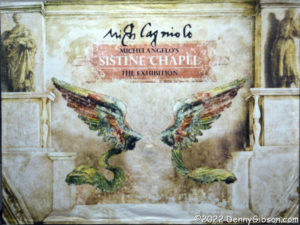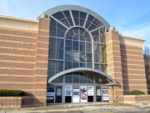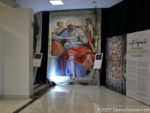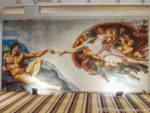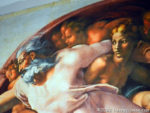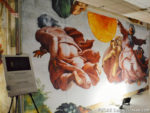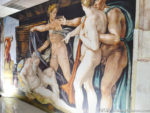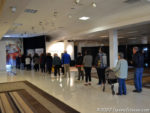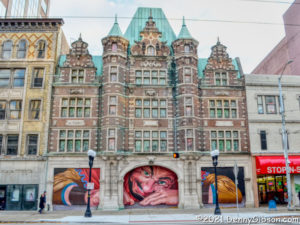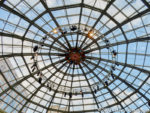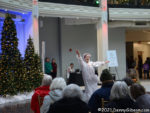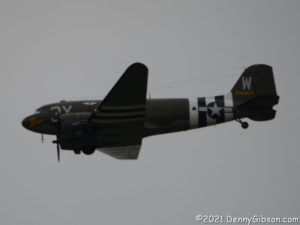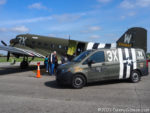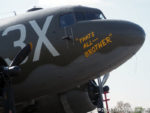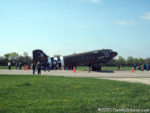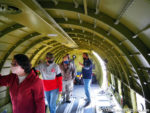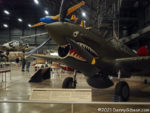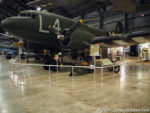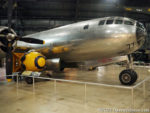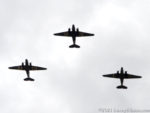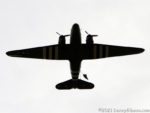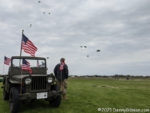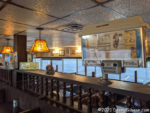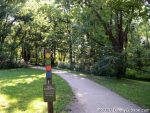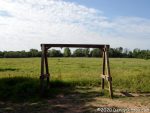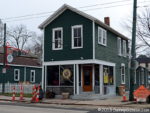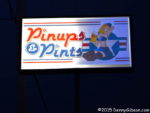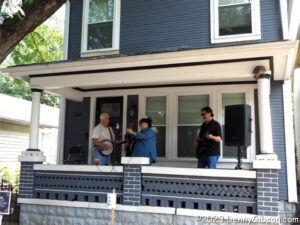 I attended my first Porchfest in 2018. It was Dayton’s second. Despite good intentions, I did not make it back in 2019 and there understandably wasn’t one in 2020. Dayton did hold Porchfests in 2021 and 2022 but they did it without me. I guess I sort of forgot about them until I saw an ad of some sort a few weeks ago. Ithaca, NY, had the first Porchfest in 2007. The Dayton Porchfest was number 94. There are now more than 150 taking place each year.
I attended my first Porchfest in 2018. It was Dayton’s second. Despite good intentions, I did not make it back in 2019 and there understandably wasn’t one in 2020. Dayton did hold Porchfests in 2021 and 2022 but they did it without me. I guess I sort of forgot about them until I saw an ad of some sort a few weeks ago. Ithaca, NY, had the first Porchfest in 2007. The Dayton Porchfest was number 94. There are now more than 150 taking place each year.
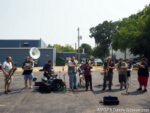
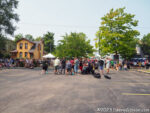 That opening picture of Baker & Collins, of the band Berachah Valley, probably looks exactly like what you expect a porch fest to look like but that is not the way this one started. At 12:15, after a few announcements, Phil’s Big Azz Brass Band kicked off the music in a parking lot. No porch could hold them.
That opening picture of Baker & Collins, of the band Berachah Valley, probably looks exactly like what you expect a porch fest to look like but that is not the way this one started. At 12:15, after a few announcements, Phil’s Big Azz Brass Band kicked off the music in a parking lot. No porch could hold them.
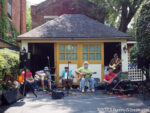
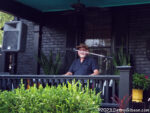 Starting at 1:00, and continuing for the next six hours, eight to ten concerts began on porches — or something similar — throughout the Saint Anne’s Hill section of Dayton every hour on the hour. After listening to a few tunes from Baker & Collins, I moved on to catch a few from Jimmy D. Rogers then around the corner to catch a few more from Dennis Geehan and the Storied Blues Project.
Starting at 1:00, and continuing for the next six hours, eight to ten concerts began on porches — or something similar — throughout the Saint Anne’s Hill section of Dayton every hour on the hour. After listening to a few tunes from Baker & Collins, I moved on to catch a few from Jimmy D. Rogers then around the corner to catch a few more from Dennis Geehan and the Storied Blues Project.
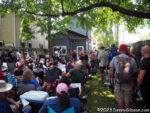
 This is crabswithoutlegs who, in addition to having a name that triggers a plethora of questions, were probably the highlight of my day. They are on a back porch in a fenced yard completely filled with people with more listening outside the fence. Fortunately, there was a small but steady stream of folks moving to other porches so I was able to slip inside the fence for a bit. This extremely tight jazz fusion group was made extra impressive by the apparent young age of every member.
This is crabswithoutlegs who, in addition to having a name that triggers a plethora of questions, were probably the highlight of my day. They are on a back porch in a fenced yard completely filled with people with more listening outside the fence. Fortunately, there was a small but steady stream of folks moving to other porches so I was able to slip inside the fence for a bit. This extremely tight jazz fusion group was made extra impressive by the apparent young age of every member.
 They and I performed on a very real porch although it faced a side yard rather than the street. I had paused for a beverage at the Fifth Street Brewpub as the 1:00 concerts came to an end then spent a little extra time taking in crabswithoutlegs. As a result, I only managed to hear pieces of two of the 2:00 concerts.
They and I performed on a very real porch although it faced a side yard rather than the street. I had paused for a beverage at the Fifth Street Brewpub as the 1:00 concerts came to an end then spent a little extra time taking in crabswithoutlegs. As a result, I only managed to hear pieces of two of the 2:00 concerts.

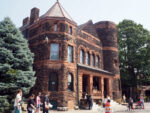
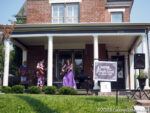 Sharon Lane was the first of the 3:00 performers I saw. I’ve included a shot of the building where she performed to show that she really was on a porch. The porch that Novena performed on was much more open and stage-like.
Sharon Lane was the first of the 3:00 performers I saw. I’ve included a shot of the building where she performed to show that she really was on a porch. The porch that Novena performed on was much more open and stage-like.

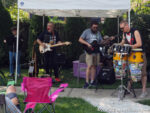
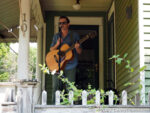 Other 3:00 concerts I saw included Austin Wolfel, Tim Gebard & the Hit Men, and Dave Zup who performed in the street while his accompaniment was on a porch.
Other 3:00 concerts I saw included Austin Wolfel, Tim Gebard & the Hit Men, and Dave Zup who performed in the street while his accompaniment was on a porch.
There is no such thing as too much music but there was more music than I could take in. It wasn’t really practical to attend all of the eight or more concerts occurring simultaneously plus I did not make it to the end of the festival. In 2018, it was rain that caused me to leave early. In 2023, it was my legs. Four hours (minus one beer) of walking wore me out. I know I missed a lot. Porchfest is a great concept and Dayton, via Saint Anne’s Hill, does it right.

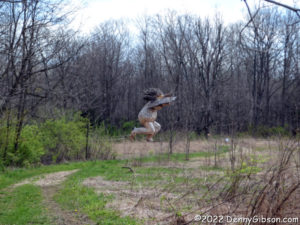
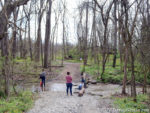
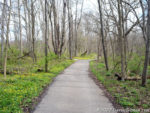



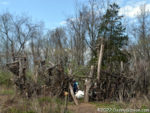
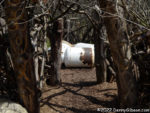


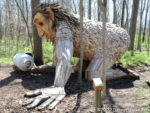
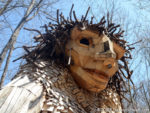






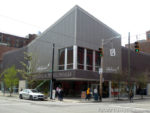

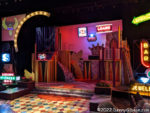

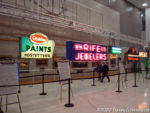


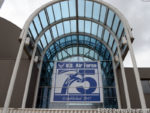
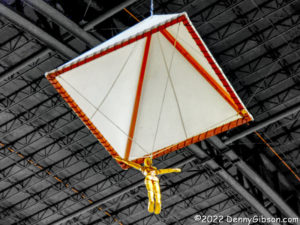
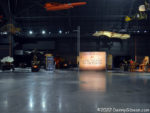
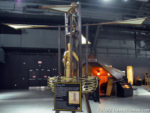
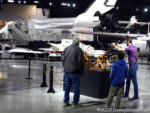
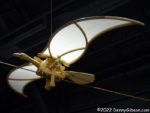
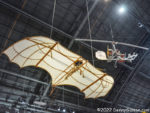
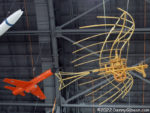
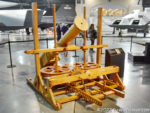
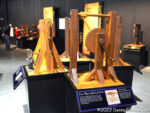

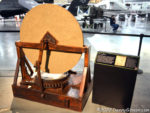

 Nearly four months ago, when one February day seemed as good as any other, I purchased a ticket to see Hamilton at the Schuster Center in Dayton, Ohio. On Thursday, as various alerts and other weather-related stories popped up, I thought the show might be canceled and took a look at the theater website where I found this banner displayed. The small print says, “All performances will go on as scheduled unless there is a Level 3 Snow Emergency in Montgomery County, Ohio.” Since purchasing the ticket, I had received a few emails with advice on parking and restaurants and some other details about attending the performance including one that arrived at noon on Thursday. Read about Ohio’s three levels of snow emergencies
Nearly four months ago, when one February day seemed as good as any other, I purchased a ticket to see Hamilton at the Schuster Center in Dayton, Ohio. On Thursday, as various alerts and other weather-related stories popped up, I thought the show might be canceled and took a look at the theater website where I found this banner displayed. The small print says, “All performances will go on as scheduled unless there is a Level 3 Snow Emergency in Montgomery County, Ohio.” Since purchasing the ticket, I had received a few emails with advice on parking and restaurants and some other details about attending the performance including one that arrived at noon on Thursday. Read about Ohio’s three levels of snow emergencies 

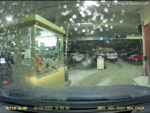



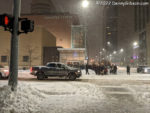


 Although I didn’t actually see it until Friday morning, this message was emailed about a quarter to 6:00 on Thursday. A similar message was posted to Facebook and the website, presumedly about the same time.
Although I didn’t actually see it until Friday morning, this message was emailed about a quarter to 6:00 on Thursday. A similar message was posted to Facebook and the website, presumedly about the same time.